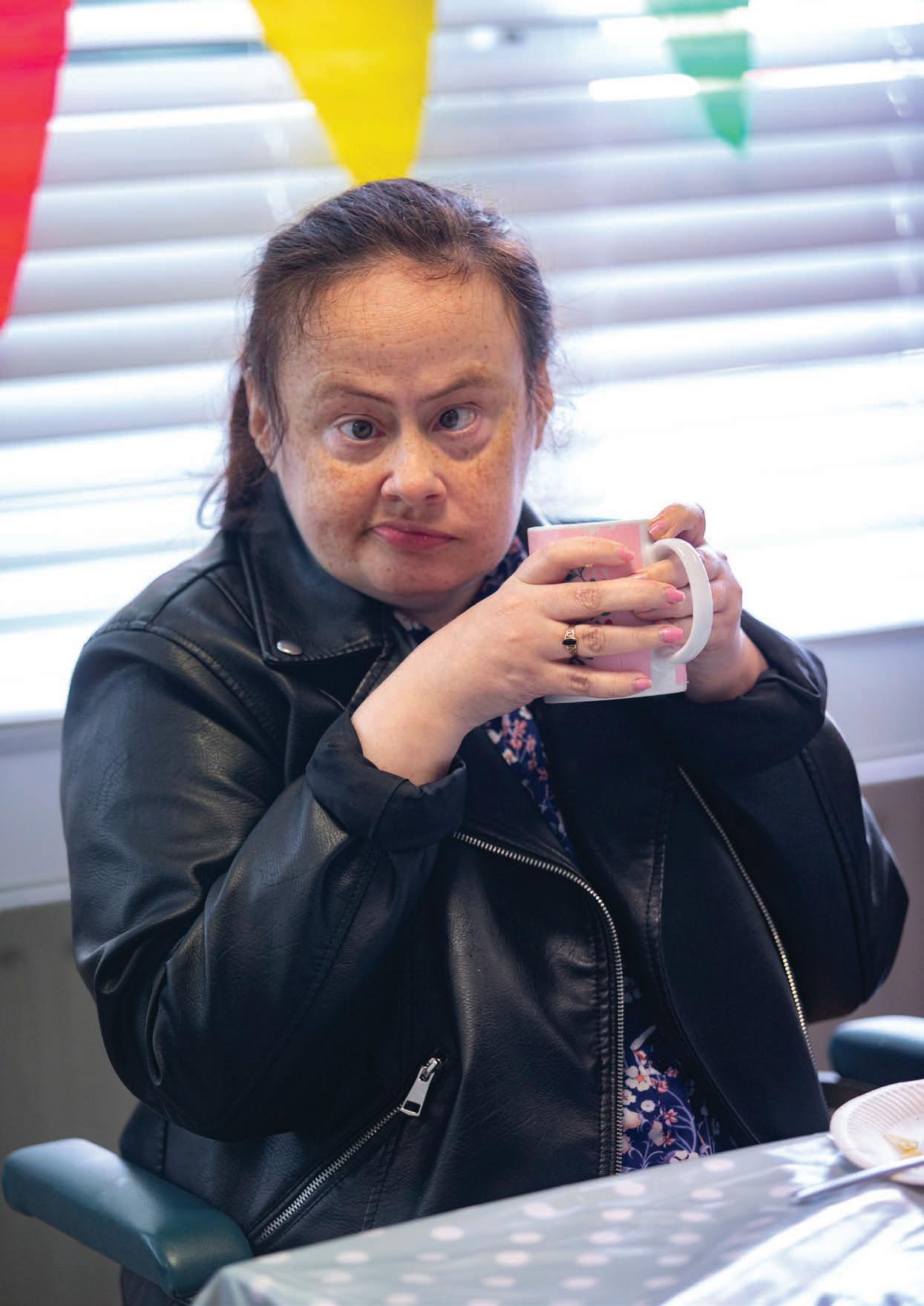











For almost 75 years, St Michael’s House (SMH) has sought to provide the best support we can to people with intellectual disability; this is our purpose and intent and informs all that we do. Over time language changes, needs change, capabilities change, and models of support change. As an organisation that started to support children, we have developed into providing support across the lifespan and to a range of disabilities. What has not changed is our focus on our service users, and their families.
Now, as we move towards our 75TH anniversary, is an opportune time for a careful consideration of our future, and of our plans. Driving all our work on this strategy is the UN convention on the Rights of People with Disabilities (UNCRPD) which Ireland signed in 2007, and ratified in 2018. Building on extensive work from SMH, and the National Disability Authority, and informed by the UNCRPD, and by an extensive consultation with service users, families, staff and other stakeholders, we have devised a rights based strategy, with a detailed set of goals, and the necessary enablers. Implemented, this will prepare all of us in SMH well for the start of another 75 years of service.

St Michael’s House has an extensive and impressive history in local communities throughout the greater Dublin region, with many changes, developments, innovation and expansion throughout the years guided by previous strategic plans. 2021 was the final year of our 2017-2021 Strategic Plan and while we faced many challenges together through this timeframe, there was much success and achievement accomplished under the six main goals identified. The global pandemic from March 2020 impacted all our lives greatly especially individuals who use services, their families, carers and staff. As CEO, I am very proud of the resilience, flexibility and professionalism of our service user and staff teams as we navigated our way through the pandemic, and found new ways of working. In 2021, we set about developing a new Strategic Plan, which was informed by key learning from the previous Strategy. A very extensive consultation took place with service users, families, staff and other stakeholders throughout 2021. Our virtual Activity Hub, which was developed in response to the pandemic, acted as a valuable communication platform where people could meet, discuss and inform our vision for the next five years. This new Strategy will ensure that the Rights of those who use our services are the focus, which will not only assist St Michael’s House to innovate and respond appropriately over the next five years, but will encourage individuals to continue to claim their Rights. The challenges we face together are significant, but this Strategy is our new roadmap and the plan for the next five years is clear.
I would like to sincerely thank all those who contributed to this new Strategy for St Michael’s House. Notably, I would like to thank Dr Karen Finnerty, who stepped into the role of Director of Strategic Development and guided us all through the process. We are extremely fortunate that her significant knowledge and expertise facilitated and drove this plan. I would also like to thank the Chair of the Board of Directors of St Michael’s House, Professor Anthony Staines, and all the Directors who graciously give their time and knowledge which continues to guide and support the organisation. Finally, I would also like to thank the service users and families who contributed to the plan and the staff who supported them to do so.
I am excited for the next five years, and look forward to working with you all to ensure this plan delivers for service users, their families and the staff.
MS. LIZ REYNOLDS, CEO

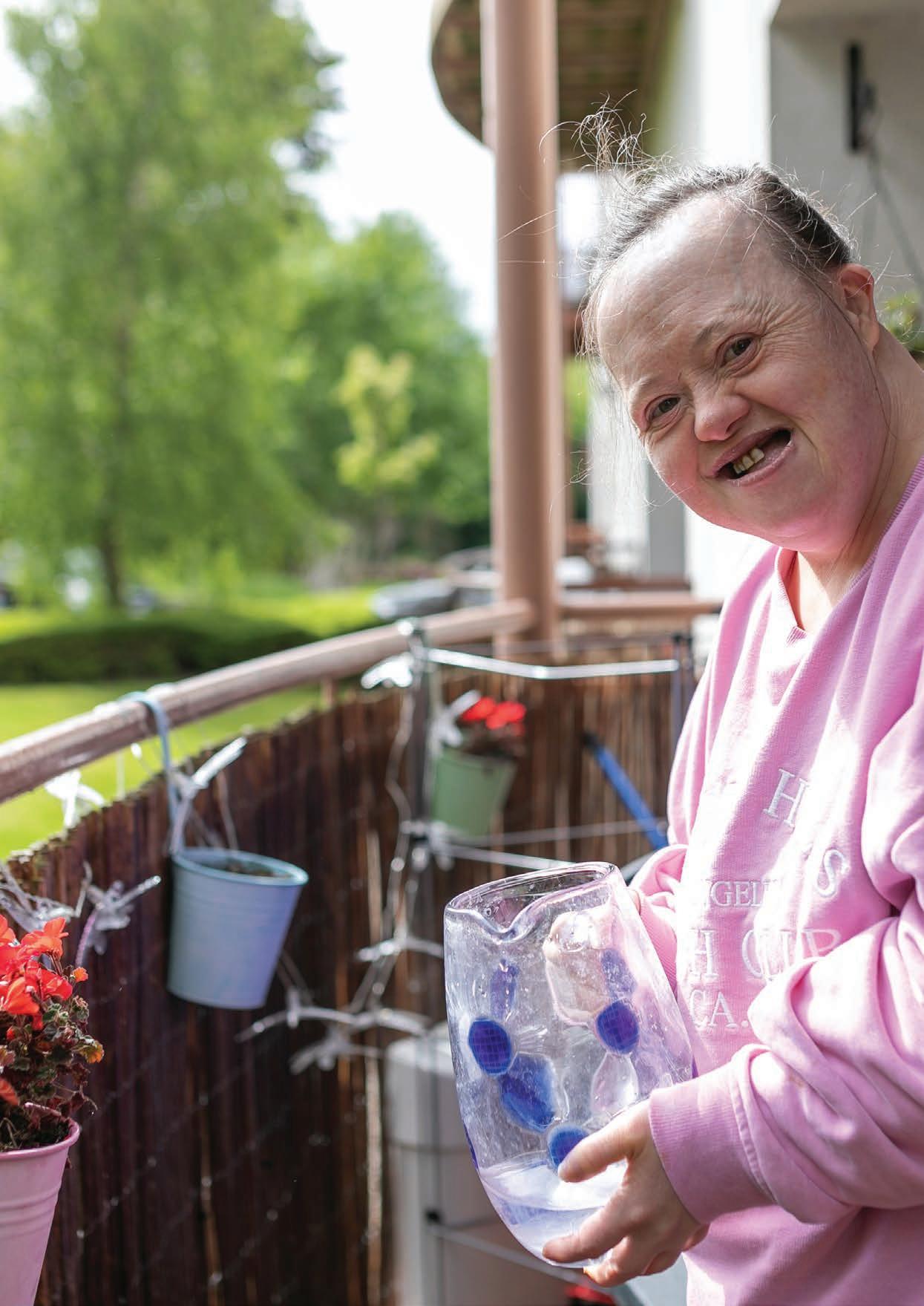

We hope that the information presented in this plan will give an insight into the work of St. Michael’s House (SMH) – what we do, how we do it, what is important to us and the people we support, and what we will focus on over the years of the plan to improve our services for those who use them.
SMH is committed to ensuring that we are an organisation that delivers services to people with disabilities based on rights - as detailed in the United Nations Convention on the Rights of People with Disabilities (UNCRPD). We worked on building the foundations of a rights based service over 2017-2021 through the implementation of person centredness in all aspects of our service delivery and where feasible, by providing services on an individualised basis. We know what working in a person centred and individualised way looks like, and despite ongoing challenges will work in this new Strategy to progress this way of working to ensure a better quality of service for all. We are proud of the work we do and of our commitment to service users, families and staff. We are committed to valuing our staff and building an excellent and skilled workforce. We are dedicated to the continual improvement and enhancement of the services we provide. We also wish to work collaboratively with our funders to achieve the optimum service experience for our service users and their families and supporters. Through the implementation of this Strategy, we will drive improvements in all our services which ultimately will be reflected in improved and enhanced lives and experiences for services users, their families/supporters and staff. The Plan sets out what we want to achieve over the coming five years. It will be used by all departments and service areas for annual and project planning, for decision-making, for resource allocation and for reviewing how well we are doing. It will the benchmark against which we will know whether or not we are providing excellent services. For each year of the plan, we work with our funders in determining need and associated funds, and will review our ability to re-configure services as required. We will seek any additional allocation required to support achieving the aspirations and goals of this plan but we are required to work within the budget allocated in accordance with a Service Arrangement with the HSE.
We hope that as you read through this plan, you get a strong sense of what we want to achieve and how we aim to achieve what we say. We are always open to providing more information, hearing suggestions/ideas, taking feedback (positive and negative) toward continually seeking to improve. If you would like to get in touch please do so through our website www.smh.ie.
Thank you.
Following the completion of the 2017 – 2021 Strategic Plan, planning commenced, during 2021, on the St. Michael’s House Strategy to run from 2022-2026. To help shape the new fiveyear Strategic Plan a comprehensive consultation process was undertaken with all stakeholders. In addition to the consultation processes key learnings from the 2017-2021 Strategy were taken into account.
In formulating the 2022 Strategy a key first step was to revisit our Vision, Mission, and Values (VMV). This commenced during the consultation process and concluded in late 2021 with the engagement of an external facilitator who worked with the EMT and Board in joint sessions. This concluded with the formulating of a revised VMV:
Vision:
A society in which people of every ability can live the life of their choosing.
Mission:
SMH works with Services Users to understand their needs and wishes and help them achieve their goals -
Values: Respect, Kindness, Honesty, Excellence, Creativity.
“Your Life, Your Rights, Your Choices”.
The foundation of our 2022 Strategy is a rights based approach to service delivery for service users and planning for the duration of the lifecycle with a particular focus on key transition points. From this we have developed a service concept approach that reinforces service users at the core of all we do and recognises the key role of service users’ families (and supporters), staff, Government, and broader society.
Our 2022 Strategy has four key Goals:
1. A Rights Based Service for service users
2. Participation of Service Users and Families/Supporters
3. Valuing and Investing in Staff
4. Learning from and influencing the Sector, Government and Society
We have also identified four Strategy Enablers to support the delivery of the Strategic Goals
1. Robust Structures and Resources
2. Highest Quality Homes and Premises
3. Effective Information, IT and Data Management
4. Quality Enhancement, Integrity and Regulatory Compliance
Each Goal and Enabler will have a number of determined Key Performance Indicators (KPIs) which will be used to structure planning and decision-making and which will be reviewed continually by the Executive Management Team (EMT) with Governance oversight by the Board.
In this document we have set out the background to the Strategy development, the process undertaken, detailed our operating environment and outlined our service concept and the related key goals and enablers. We would like to recognise all those who have inputted into the development of our 2022 Strategy and in particular the significant input of our Service Users and the staff who supported them.

St. Michael’s House (SMH), which started with one facility in 1955, now provides services and supports to people with disabilities and their families and/or supporters in the Dublin area. Currently we support c2,300 people including c1,200 children and this has an impact on thousands of family members. The services we provide include residential homes in community settings and independent supported living, day services, respite services, training and education services including six special national schools and clinical therapeutic supports.
We employ c1,200 staff across a wide range of roles and grades including direct support workers, social care workers and leaders, persons-in-charge, nurses, doctors, managers, clinical staff, administration, IT, transport and maintenance. We are funded by the HSE, Tusla and the Department of Education. In 2021 our HSE allocation was over €100m and while we are a large and complex organisation we continually strive to work by listening to what people want and need and operating in a person-centred way.

The review of the 2017-2021 plan established that despite the onset of a worldwide pandemic in early 2020, significant progress was made in achieving the plan. Of 202 objectives set out in the plan, 86% were completed or commenced with
75% Fully Complete
6% No Longer Relevant
19% New Strategy /Department Plans
In the 2017-2021 Strategic Plan, actions were clearly linked to specific individuals and this helped to make responsibility for the implementation of the plan clear. In addition, a regular review process kept the plan prioritised and on track.
There was general recognition that the consultation activity undertaken for this plan significantly more inclusive than that undertaken for the 2017-2021 plan.
Reflection and discussion ascertained that the new Strategy should contain the high level strategic goals/objectives with a number of sub-objectives and the metrics against which the objectives would be measured. There was agreement that key performance indicators should be included in the new plan. While ambition is a key component of any Strategy, the review concluded that this must be considered in the context of what is realistically achievable. It was recognised that the absence of a muti-year budget allocation process makes planning challenging. However, it was also accepted that as an organisation we do need to improve in managing and working with the financial information that is available to us and which should inform our decision-making. Using reconfiguration of funds (with agreement of funders) provides flexibility and creativity in addressing new and emerging service user need. A wide dissemination and use of the plan was recommended – for new staff induction, planning, review, measurement, for staff inputs, for appraising staff, for communicating with service users and families and for working with our funders.
One of the key principles guiding the approach to the development of this Strategy was to listen to all views and to build an evidence base for findings and recommendations.
To this end, during 2021 a comprehensive consultative and collaborative process was undertaken with all stakeholders, ensuring that all service users, families/supporters and staff were given at minimum the opportunity to contribute whether or not they chose to do so. While inputs from all stakeholders was valued, by far the most important part of the work was a comprehensive engagement with service users and families/ supporters - this work forms the backbone of our new Strategic Plan. To undertake the extensive work that was required to include service users and families in a meaningful way, working groups from all parts of the organisation were formed and they completed the bulk of the work required to ensure the consultation process was a success.
Additional inputs included:
• Reviewing our progress in the 2017-2021 plan and examining what worked and what didn’t work
• Talking to a sample of other organisations about what they do and how they do it
• Discussing with our funders what they expect of us and would like to see in the plan
• Reviewing our Vision and Mission and drafting a new Vision and Mission
• Examining our values and determining what values we want as an organisation and what this means in service delivery
• Getting staff opinions and views through an online questionnaire
• Having department heads tell us what is important in their areas for the coming 5 years
• Examining what policy documents and demographic projections tell us about the environment we are operating in
• The Board and Executive Management Team (EMT) working both separately and collectively on determining aspects of the plan
Developing a process for stakeholder engagement during the pandemic was challenging and the required restrictions shaped what was possible and achievable. All engagements were managed through surveys, submissions and online and face-to-face groups. While some feedback was not to the level that we had anticipated, we secured over 1,000 direct inputs (of varying types) from service users, families/supporters, staff, management, Board, funders, policy makers, and similar organisations. We extend our appreciation and thanks to all those who took the time to participate and contribute.
To continue the engagement work commenced for the Strategy development, Goals 2 and 3 commit the organisation to continuing to develop integrated robust systems for service user, family and staff participation to strengthen engagement overall and to develop continual feedback loops in the best interests of providing excellent service and being an exemplar employer.
On completion of the review work on the 2017-2021 Strategy Plan and the extensive external and internal consultation, all the resulting information was reviewed, categorised and analysed using a thematic methodology. Using this approach various structures and suggested options to present the information in the plan were developed by the Strategy Development Director. A number of sessions were held with the CEO and Executive Management Team (EMT) where the information was discussed, reviewed and recommendations determined. Open sessions were held for service users, families/supporters and staff to allow them additional input opportunities as the revised Vision, Mission and Values and the main themes of the plan emerged. Governance structures for the process had been implemented by the Board and a strategic sub-committee of the Board established. This committee and its members reviewed the materials developed based on the work of the EMT and the Director of Strategy Development and using an iterative progressive approach the material was honed and refined to deliver the plan as it is presented here.
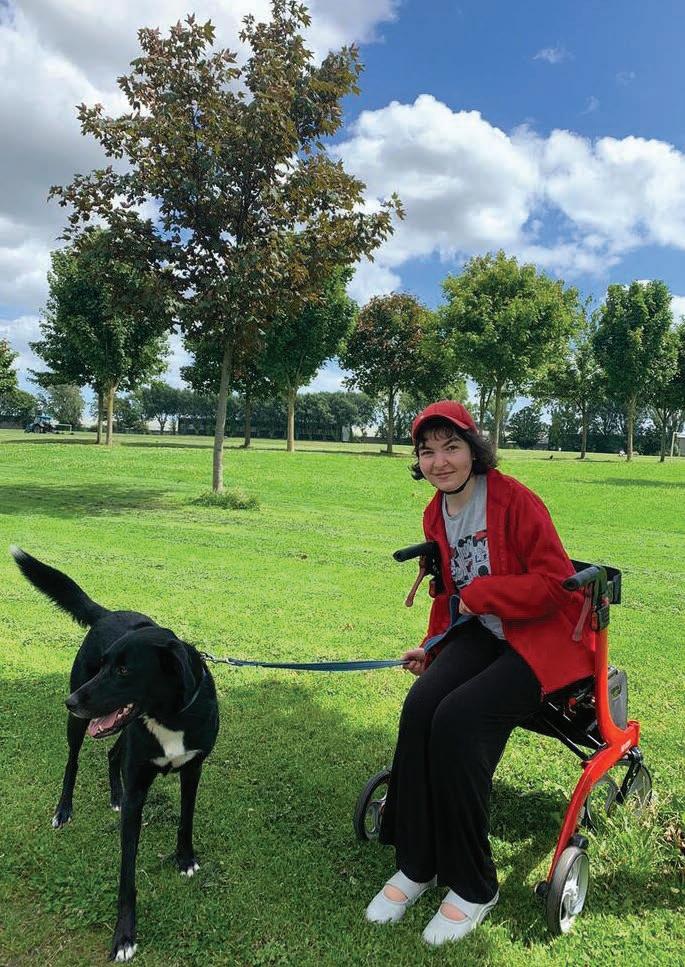
There is an overall aim that this Strategy will have meaning for all staff in their daily work, that it sets in a very positive way the direction for work at local as well as organisational level, and that the Strategy values and behaviours embed even more fully the organisations commitment to person-centred services. It sets out SMH Strategic Priorities for the years 2022 to 2026 inclusive (5 years) and what we hope to achieve under each Goal and Enabler of the plan. It is recognised and accepted that over the lifetime of the plan changes in the operating environment in and/ or funding challenges may impact of the delivery of the plan resulting in required modifications, but without deviating from the overall Strategic imperative to the move to service delivery based on rights.
The broad implementation approach will be a Plan, Do and Review cycle
to which staff and service users will be facilitated to contribute. An overall implementation and review plan will be developed which will identify the review cycles and how each level and section of the organisation can contribute. This implementation plan will be published as part of the Strategy documentation.
The volume of work required to deliver on this plan is significant. To manage the implementation and to keep focus and coherence a number of five-year and annual plans that sit under this Strategy and which will operate within a performance achievement framework will be developed as follows:
Five-year plans in the areas of:
• Human Resources
• Housing
Also, plans in the areas of:
Annual Service Area Plans
Annual Department Plans
• Properties
• Information Management, IT and Communications
Organisational Annual Service Plan
Organisation Service Level Agreement (SLA)( HSE).
Monitoring will be undertaken at a number of levels (organisational, service, departmental, team and individual) at defined timeframes. Outputs will be monitored by the EMT with periodic reporting to the Board.
An overall review of the outputs of the Strategy will commence during the last year of the plan (2026) to commence the groundwork for the subsequent plan to run from 2027-2032.
Early in the process the importance of revising the Vision, Mission and Values (VMV) was identified and inputs into revising the VMV was sought through the consultation process which included joint work undertaken by the CEO, EMT and Board. The new draft Vision, Mission and Values were then presented in open sessions to groups of service users, staff and families. These sessions established broad agreement with and acceptance of the new Vision, Mission and Values.
Vision:
A society in which people of every ability can live the life of their choosing.
Mission:
SMH works with Services Users to understand their needs and wishes and help them achieve their goals -
Values: Respect, Kindness, Honesty, Excellence, Creativity.
Every day values translate into behaviours and how all involved in the organisation work and engage with each other. It is an objective under Goal 3 of this plan that competency frameworks including behaviours driven by our Values will be developed for all major roles in the organisation.
“Your Life, Your Rights, Your Choices”.
• Respectful communications with service users, families, other staff members
Respect
We will always remember that for service users it is “Their Lives, Their Rights, Their Choices”.
• Ensuring confidentiality
• Following through on promises
• Good teamwork
• Keeping to deadlines
• Delegating meaningful work
• Financial respect
• Treating property well
• Be person centred with everyone
• Ensure your own wellbeing
Kindness
We will work with kindness and expect the same in return.
• Seek appropriate support when required
• Support new staff
• Providing appropriate positive feedback
• Actively listen to everyone
We will always give each other the full and truthful picture. If we have concerns, we will express them openly. If we promise it, we deliver on it. And we will listen.
Honesty
Excellence
We are inspired by challenges. We will find new ways of doing things. We will not give up in the face of challenges.
• Being truthful
• Owning up to and learning from mistakes/errors
• Integrity in interactions including financial
• Reporting any matters of concern
• Carrying out best professional practice
• Regularly reflecting on practice
• Ensuring minimum required training (MRT) training is up to date
• Ensuring your report writing is professional and coherent
• Seeking to be positive and upbeat in work
Creativity
We will not simply accept what is. We will explore with others how things can be changed for the better. We will be open to learning from others and we will share openly our own knowledge, skills and resources.
• Always seeking creative person focussed solutions to challenges
• Make positive changes in the life of each person you support
• Be supportive of others’ ideas
• Resilience during a project/difficult work situation
• Introducing more efficient and/or effective processes in area of work

The environment in which St. Michael’s House operates is extensive and complex.
It includes legislation and regulation, national policy implementation, social and demographic factors and economics. This requires that in its day-to-day work, and in planning and review activity the organisation must comply with legislation, demonstrate evidence of compliance, participate in national policy implementation and above all ensure that this work contributes to the quality of service delivered to service users. Often this work is ‘hidden’, operating in the background but requiring expertise, skill and manpower to ensure its successful operation.
Since the 1960s the organisation has operated under the auspices of Department of Health (DoH) and more recently the Health Service Executive (HSE). It is currently planned that all disability service provision will move from the Department of Health to the Department of Children, Equality, Disability, Integration and Youth (DCEDIY) although no date has been confirmed. At this time it is not possible to determine what, if any, effect this move will have on SMH service provision but any likely impacts will be evident in the life span of this plan and may impact on its objectives. Our six national schools and our Short Term Training Centre for school leavers continue to sit under the Department of Education.
A range of legislation and related regulations apply to St. Michael’s House.
The most significant includes (but is not limited to):
• The Health Act 2004, 2007
• Annual Service Plan Agreement with the Health Service Executive (HSE)
• The United Nations Convention on the Rights of People with Disabilities (UNCRPD)
• Disability Act 2005
• The Equality Acts 1998-2015
• Childcare Act 2006
• Children’s First Act 2015
• The Charities Act 2009
• The Companies Act 2018, 2020
• The Assisted DecisionMaking (Capacity) Act 2015
• Safety, Health and Welfare at Work Act 2005
• Data Protection Act 2018
• Housing (Regulation of Approved Housing Bodies) Act 2019
• All Employment Legislation and Acts
The regulators that we engage with regularly, and to whom we must demonstrate compliance with regulations are (but not limited to):
• Health Information and Quality Authority (HIQA)
• Data Protection Commissioner (GDPR regulation)
• Charities Regulator
• National Incident Management System (NIMS)
• Professional Registration – medical, nursing, CORU professions
• Health and Safety Authority
• TUSLA
• National Safeguarding Office
• Approved Housing Bodies Regulatory Authority

The area of disability service provision is impacted by a range of policy documents. A selection of the key policy documents is summarised below and a sample of the remainder are named (in Table 1).
Transforming Lives is a framework under which HSE Social Care Services deliver on their commitment to enabling people with disabilities to achieve their full potential and assisting them live ordinary lives in ordinary places, as independently as possible while ensuring that the voices of service users, and their families, are heard and that they are fully involved in planning and improving services to meet their needs. The Transforming Lives programme is the key mechanism through which the Government and the HSE is delivering on the strategic aims of the ‘Value for Money and Policy Review of Disability Services in Ireland’. Transforming Lives has six objectives on which regular progress reports and updates are published.
New Directions is the HSE’s approach to supporting adults with disabilities who use day services in Ireland setting out twelve supports that should be available to people with disabilities using ‘day services’. New Directions proposes that ‘day services’ should take the form of individualised outcome-focussed supports to allow adults using those services to live a life of their choosing in accordance with their own wishes, needs and aspirations. A national structure has been established within the nine HSE Community Healthcare Organisations (CHO) to implement New Directions.
The Disability Capacity Review to 2032 takes account of the growth in disability service demand over the next ten years. With this review Government recognises that Ireland needs to plan ahead, to ensure that people with disabilities can get the right services, in the right place, at the right time. This review quantifies and costs future need for disability support services, in the light of expected population change, and the needs which are yet to be met. The Programme for Government commits to working towards implementing its recommendations. An action plan is expected in 2022.
Progressing Disability Services (PDS) is the national programme to reorganise children’s disability services. PDS has changed the way children (aged 0-18 years) and their families’ access and receive clinical disability services and aims to provide a fairer pathway to clinical supports. This policy framework for service delivery outlines the processes involved in the delivery of Children’s Disability Network Team (CDNT) Services.
Report of the Independent Review Group established to examine the role of Voluntary organisations in publicly funded, health and personal social services (The Catherine Day Report), while not in itself a policy document, was established to examine the current role and status of voluntary organisations in the operation of health and personal social services in Ireland, including Section 38 & 39 organisations. It also examined the strengths and weaknesses of this mode of service provision and the issues which arise in connection with the provision of public services through such organisations. It established that the operational operating environment of voluntary bodies is unnecessarily complex, given the raft of legislative, regulatory and compliance demands (as detailed above) and that this should be addressed at a statutory level. The review identified 24 recommendations which, if implemented, would fundamentally change how such organisations including SMH operate. No implementation plan has as yet issued.
ADULT SERVICES
National Strategy and Policy for the Provision of NeuroRehabilitation Services in Ireland
2019-2021
2011 Time to Move on from Congregated Settings
CHILDREN’S AND YOUNG PERSONS SERVICES
Better Outcomes, Brighter Futures: Report of the National Policy Framework for Children & Young People
2014-2020.
Education for Persons with Special Education Needs (EPSEN) Act 2004
COMMON TO BOTH ADULTS AND CHILDREN
• SlainteCare
• Department of Health: Statement of Strategy 2016 – 19
• The HSE Corporate Plan 2021-24
• The National Disability Inclusion Strategy 2017-2021
• National Clinical Programme for People with Disability
• Harnessing Digital - The Digital Ireland Framework 2022
The fiscal space within which we deliver our services is a significant consideration and the delivery of our services within allocation is an ongoing challenge. Despite additional resources in recent years, the unmet need for services has always and continues to exceed capacity. In this environment, we have sought and will continue to prioritise resources. The organisation seeks to achieve Value for Money across the duration of this plan and we will seek to reconfigure the use of funds to ensure efficiency and effectiveness. State funds over the coming five years will determine SMH allocation and this directly determines what it is possible to achieve. We will continue to work with the HSE, and if indicated, the Disability Supports Management Application Tool (DCEDIY) to ensure that the business cases for additional resources are based on strong evidence of need and our capacity to deliver effective services.
With regard to SMH current service user population and their changing needs, recent data (Census 2016, HRB 2020) indicates that people with ID are living longer and similar to the remainder of the population require different and more complex supports as they age. Currently SMH has an ‘ageing population’ with 120 people over age 65; on conclusion of this Strategy 178 of our service user’s population will be over age 65. A number of these individuals live with parents now in their 80s or 90s. All parts of our service delivery will have to evolve and adapt to meet the needs of these individuals.
In addition, SMH operates primarily in the Greater Dublin Area which according to the Central Statistics Office (CSO, 2017) will see its population increase by just over 400,000 by 2031. Projections based on CSO data (2016) and HRB data (2020) suggest a growth potential for SMH of an additional c1300 service users to the end of the decade – 50% of which will be required in the lifetime of this Strategy. This equates to an increase in demand in the region of 130 ‘places’ per year over all age groups traditionally served by SMH noting that each place needs sufficient frontline staffing, clinical inputs, management time, shared services and transport.
It is estimated that of these 130 people, 14-16 people per annum on average will be drawn from the ASD/ID population, a group that SMH knows from experience require specific and focussed inputs. In addition, the data suggests a need for an additional 13 - 33 additional residential houses over the period (2022-2032) (allowing 5 places per house) – which equates to 6-17 new houses over the lifetime of this Strategy. And this only projects on the basis of the current community house model – the commitment to a rights based service adopting the will & preference of the service user as a guiding principle, commits the organisation to operating an individualised service which will most likely increase the need for additional homes beyond the current modest projection.
The underpinning of this Strategy is a service model comprised of placing the service user at the centre of the organisation and all it does. This is followed by a recognition of the significance of family and/ or support persons in the delivery of services. The third area of the model is that of staff and how they are supported to and contribute to the delivery of services. Finally the organisation sees itself as having external influence – learning from and informing and contributing to the shaping of services and how people with disabilities are viewed and supported to be full members of society. This service concept can be illustrated as follows and four Strategic Goals & four Enablers flow from it:
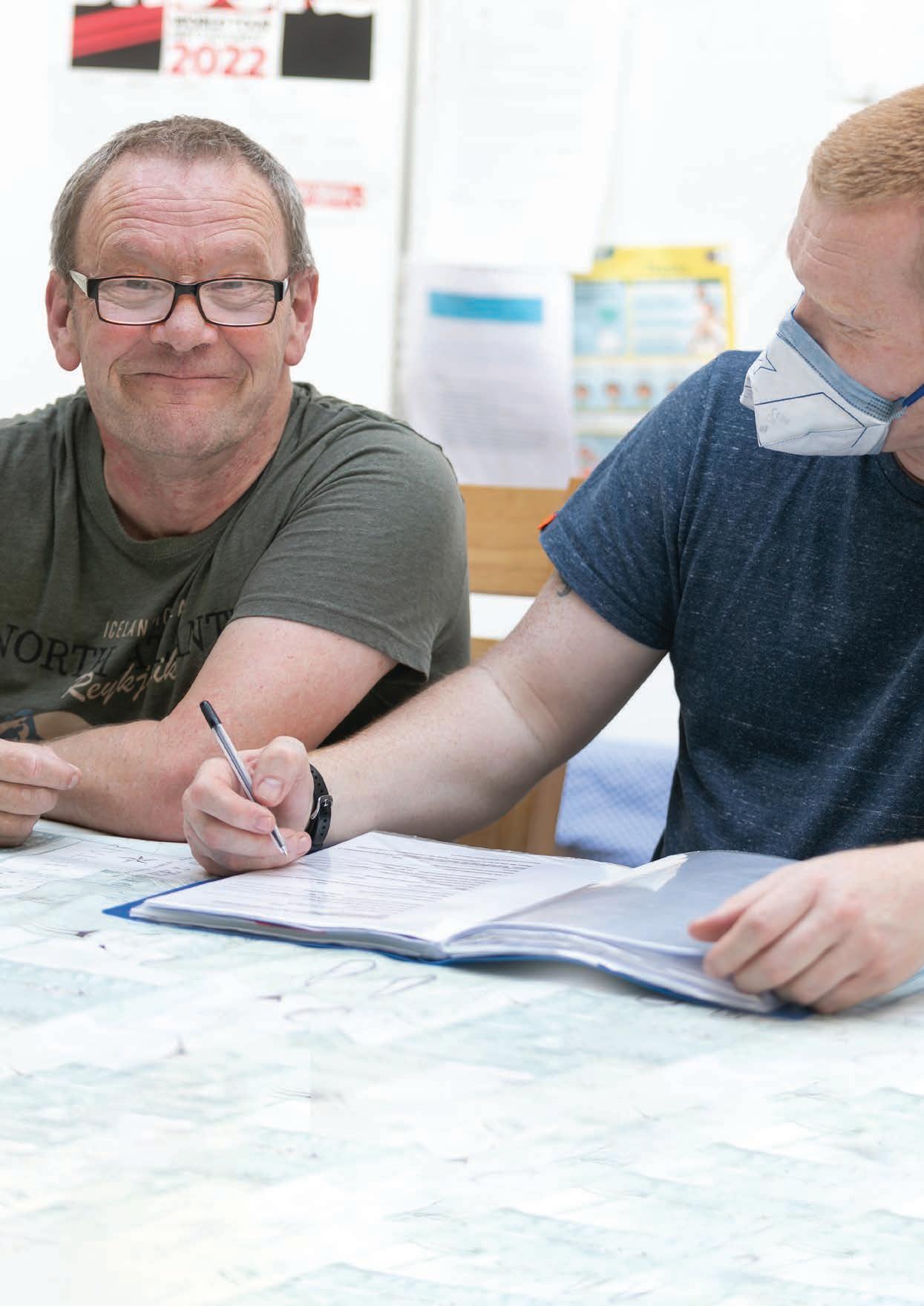
A first and primary goal of this Strategy is to build on the person centred work successfully implemented in the 2017-2021 Strategy and continue to move the organisation toward the delivery of services based on service users’ rights. Since 2018 the United Nations Convention on the Rights of Persons with Disabilities (UNCRPD) is the legal and overarching framework within which all services for people with disabilities are bound to operate.
As a fundamental step, this Strategy adopts the Principles of the Convention on the Rights of Persons with Disabilities:
a) Respect for inherent dignity, individual autonomy including the freedom to make one’s own choices, and independence of persons;
(b) Non-discrimination;
(c) Full and effective participation and inclusion in society;
(d) Respect for difference and acceptance of persons with disabilities as part of human diversity and humanity;
(e) Equality of opportunity;
(f) Accessibility;
(g) Equality between men and women;
(h) Respect for the evolving capacities of children with disabilities and respect for the right of children with disabilities to preserve their identities.
Also key to the delivery of service delivery based on rights is the enacting of the 2015 Assisted Decision-Making (Capacity) Act scheduled for 2022 and this Strategy commits the organisation to continuing the revision of decision-making and support structures to facilitate the enabling of the Act.

Fundamental to the delivery of a rights based service is the need to ensure our planning structures and associated decision-making are robust and fit-for-purpose. The consultation and review work undertaken for the development of this Strategy clearly indicated the need to progress the next iteration of the SMH Person Centred Planning (PCP) process. Very robust and striking feedback from families/supporters, highlighted the need for planning over the lifecycle particularly with regard to living arrangements, family circumstances, daily activities determined and chosen by the service user, additional therapy inputs and the delivery of respite services in accordance with national policy developments on respite service delivery. In addition, the review work on demographics suggests a need to work much more closely with families and supporters in planning for the service user’s life-cycle (based on the service users will and preference). The consultation work confirmed families/supporters’ willingness and appetite for such planning and working with the organisation to expand current models of service delivery to include additional services based in the service user’s current home.
The need for robust planning in adult service provision is also evidenced by the implementation of the New Directions standards into our adult day services in addition to the implementation of the recommendations of the Local Centre Review (2018) and the Review of Services to Adults with Autism Spectrum Disorder (2022).
With regard to children and young persons, in addition to Article 7 of the UNCRPD, the policy and approach to the delivery of services to Children and Young People is governed by the Progressing Disabilities Policy Services (PDS), a legal obligation of which SMH is now a part. SMH continuing to deliver on our commitment to this major Government reorganisation of how services are delivered to children is a predetermined part of this new Strategy. In addition to PDS, this Strategy also commits to improvements in additional aspects of service delivery to children and young people including excellent governance of our six special national schools, planning for the ongoing development of early year’s services and working with the HSE and other organisations in the ongoing development and delivery of respite services. The following objectives and KPIs have been identified to support the achievement of this goal:
We will …
• Become an organisation that fully recognises and actively works on supporting and delivering on the rights of people who use our services.
• Build and implement the next iteration of our Person Centred Planning system expanding its breadth and depth to a system addressing Lifecycle Planning and that includes families/ supporters in the planning structure.
• Within the lifecycle planning approach address need, changing need, family circumstances and will and preference.
• Working with the Day Opportunities Office (HSE) in aligning with and adopting the requirements of New Directions and actively working to deliver on service user choice.
• Implement the recommendations of the Local Centres and ASD reviews in adult day services.
• Fully implement the requirements of the Progressing Disabilities Services (PDS) Programme
• Develop excellent defined services for children and young people in our services.
• Mark the foundation of SMH at its 70 year milestone in 2025 recommitting to its ethos and founding principles.
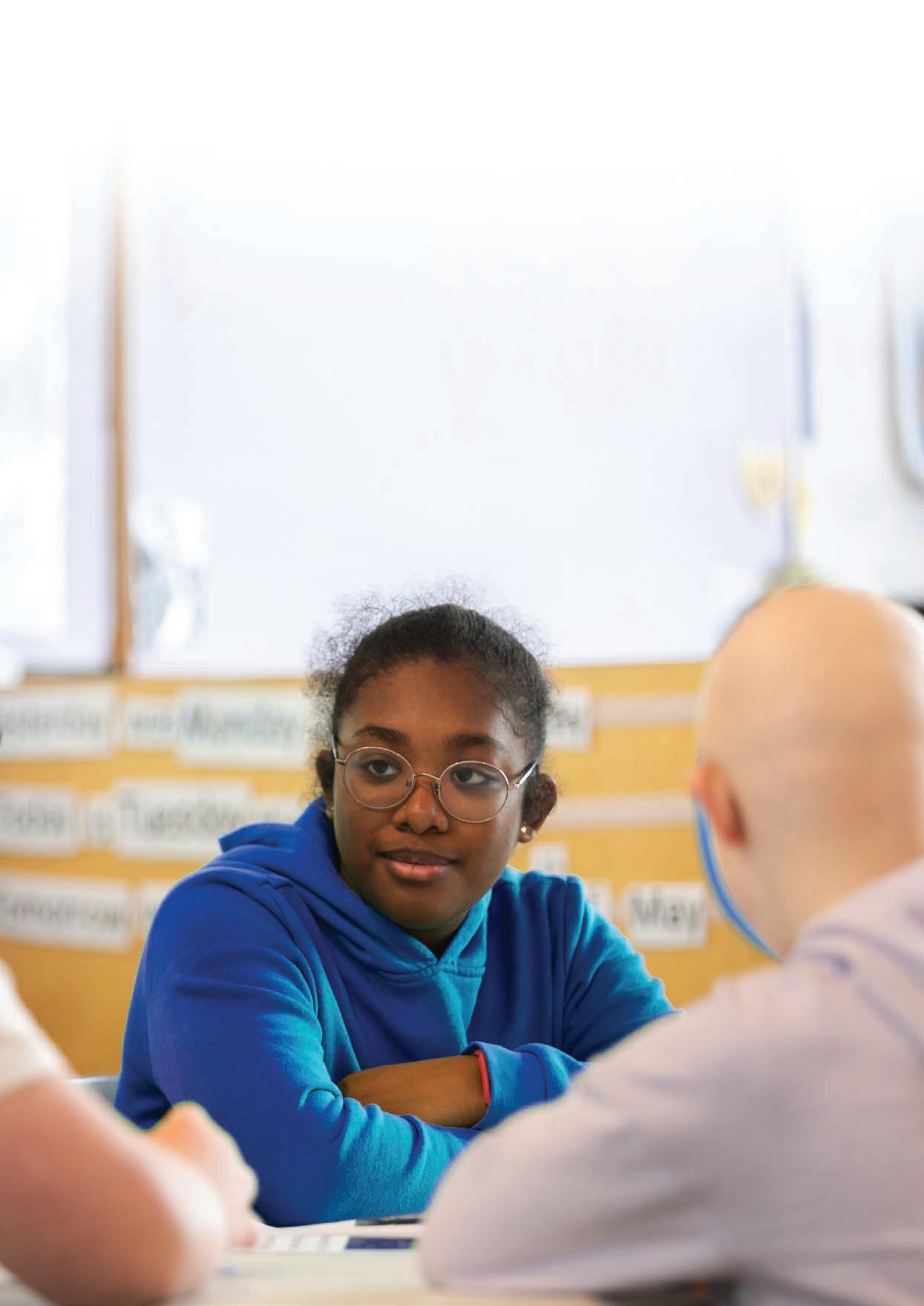
We will achieve this by….
• Listening to and actively engaging with service users and their families and /or supporters.
• Promoting a rights based approach throughout the service.
• Making education and training on rights available to all service users, families and staff.
• Developing the structures needed to implement Assisted Decision-Making (ADM) and addressing the matters arising from comprehensive Lifecyle Planning – legal, medical and financial.
• Enhancing our current Person Centred Planning (PCP) process seeking to ensure it has ‘ambition’ for service users lives, is robust throughout all areas of service, is focused on the lifespan and feeds planning and decision-making.
• Continuing to work in partnership with the HSE and other providers, adopting and applying the principles and actions of PDS.
• Continuing to work with national policy in developing other services for children including: Preschool, Respite, Paediatric Nursing, Medical and Dietetics.
• Running a number of events in 2025 to mark the organisations 70 year anniversary.
We will measure our success by…
• Applying ADM across the service implementing the plans devised by the ADM Steering and Working groups and approved by EMT.
• Completion of a review identifying improvements in our PCP process working toward planning based on the service user’s lifecycle, the implementation of agreed improvements and taking into account family circumstances.
• Have in operation a Rights Review Committee comprising largely of external independent people and linked to internal structures and processes and which includes service user representation.
• Have achieved HSE determined outcomes with regard to the implementation of New Directions in Day Services working with the HSE Day Opportunities Office.
• Implementation of a Supported Employment Service to assist service users in securing and retaining employment.
• Continuing to provide opportunities for service users to develop skills for independent living through the Horizons initiative or similar.
• Developing and implementing a 5-year plan to address changing needs as service users grow older.
• Scope and develop a position paper on how SMH might work with the appropriate national bodies (e.g. The National Federation, NDA, HSE, DCEDIY) to develop a Quality of Life Measure for service users in our sector.
In relation to the provision of services to Children and Young Persons (CYPS) we will measure success by…
• Assessing and reviewing the ongoing effectiveness of key-working across teams in CYPS.
• Having established Family Forum(s) as required by Progressing Disabilities Services (PDS) in addition to the creation of family participation pathways.
• Developing and implementing an engagement structure for the young people (age 16-18) in our services.
• Aligning with the ‘Outcome Framework for Children’ (HSE) as it is rolled out nationally. Measuring annually the level of satisfaction with CYPS through Measurement Processes of Care (MPOC) and the PDS audit framework.
The consultation engagement with stakeholders highlighted a strategic imperative to reframe how we work with service users and families/supporters with both groups wishing to be involved in key planning and decision-making. It is logical and pragmatic and in the interest of service users to develop and adopt more participative models of service provision given the challenges services will face in meeting current and future need as highlighted by the Disability Capacity Review (2021).The following objectives and KPIs have been identified to support the achievement of this goal:
We will…
• Work with service users as individuals respecting their rights and experience and that they are central in service delivery.
• Work with families/supporters respecting that they are an essential part of service delivery.
• Establish processes to ensure the service user participates in planning and decision-making.
• Establish processes to ensure that the service users’ family/supporters(s) participate in planning and decision-making in line with the service users will and preference.
• Continue to build on our Total Communications Policy for service users and staff and develop an engaging and accessible communications plan for all communications with families/supporters.
• Scope the development of a ‘Home Service’ working with families.
We will achieve this by…
• Recognising that service users sit at the core of our service and their rights and choices take precedent in decision-making.
• Ensuring that where mandated we execute the guardianship role with commitment, excellent and integrity.
• Recognising that families and/or supporters are essential in supporting SMH to deliver excellent services to service users.
• Developing systems for the participation of service users and families/supporters.
• Developing a communications plan that is engaging and accessible; which builds on our existing Total Communications policy and which supports ongoing engagement with families/supporters.
• Scope the provision of a Home Service.
We will measure success by…..
• Having in operation successful fit-for-purpose service user representation/ participative processes.
• Having in operation successful fit-for-purpose families/supporters’ representation/participative processes.
• Building evidence of good practice of participation through case study development for sharing and learning.
• Having integrated the service user voice as a central component of decisionmaking in line with expressed will and preference.
• Implementing and measuring progress with regard to the Communications plan.
• Having scoped and made informed decisions on implementing alternative models of day service provision.
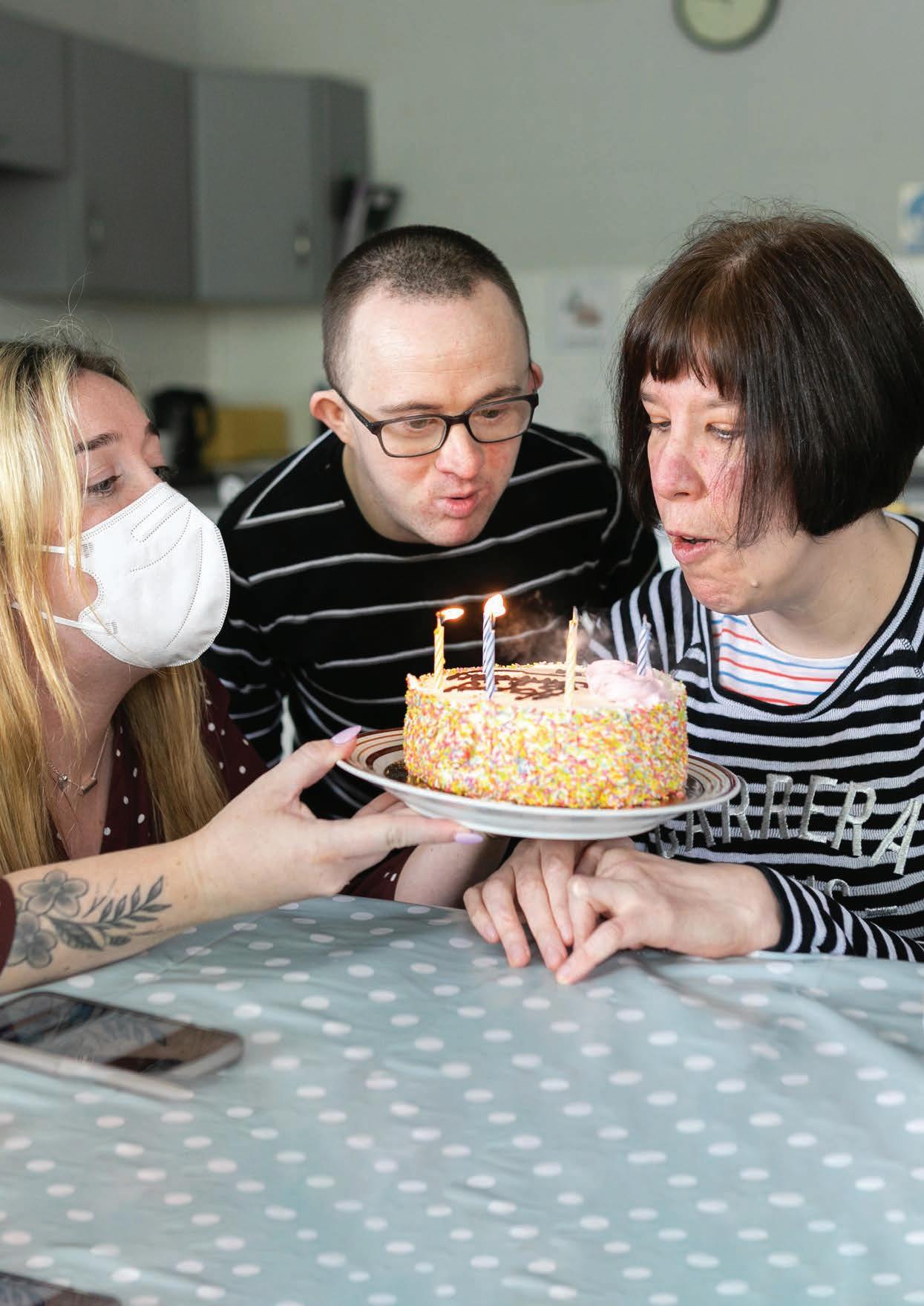
The provision of an excellent service and the achievement of this Strategy requires building on our current excellent workforce and continuing to develop a values-driven, educated, skilled, committed and resilient workforce. This requires the continual development of strategies to value, support and invest in our employees to make St. Michael’s House an Employer of Choice. The following objectives and KPIs have been identified to support the achievement of this goal:
We will…
• Instil a collective, compassionate and inclusive leadership culture to support innovation and lead change.
• Implement programmes of meaningful staff engagement - for staff retention, for listening to staff and for supporting staff.
• Invest to continue to develop a values-driven culture and a professional and ethical workforce.
• Support our workforce in being skilled and educated congruent with role.
• Implement robust talent acquisition and retention programmes.
• Proactively and purposefully manage and recognise performance at all levels and in all roles.
• Ensure our leadership and management structures are fit for purpose.
• Make communication with staff and staff feedback mechanisms engaging, positive and a central part of our 5-year communications plan.
• Clarifying, disseminating and engaging staff in the organisation’s vision, mission and values.
• Implementing engaging and positively focussed staff engagement initiatives.
• Supporting staff well-being and self-care.
• Being clear on expected behaviours and competencies linked to organisational values.
• Strengthening our staff recruitment and retention processes addressing skill gaps.
• Designing a talent development framework that focuses on lifelong learning, supports staff to develop both personally and professionally as individuals and as team members throughout their career.
• Developing and implementing a performance framework.
• Having developed and implemented a five-year HR plan linked to the strategic goals as outlined in this Strategy and focused on developing collective leadership, valuing our existing employees and enhancing performance.
• A high level of employee engagement demonstrated through performance achievement, compliance requirements, participation in feedback mechanisms and good morale.
• Having implemented a competency framework for all roles that includes values and associated behaviours and having supported staff to progress within same.
• Having developed and implemented a suite of performance metrics to include performance management, development and achievement.
• Supporting a high uptake of professional development education and training across all roles.
• Participation in an ‘Excellent Place to Work’ award process.
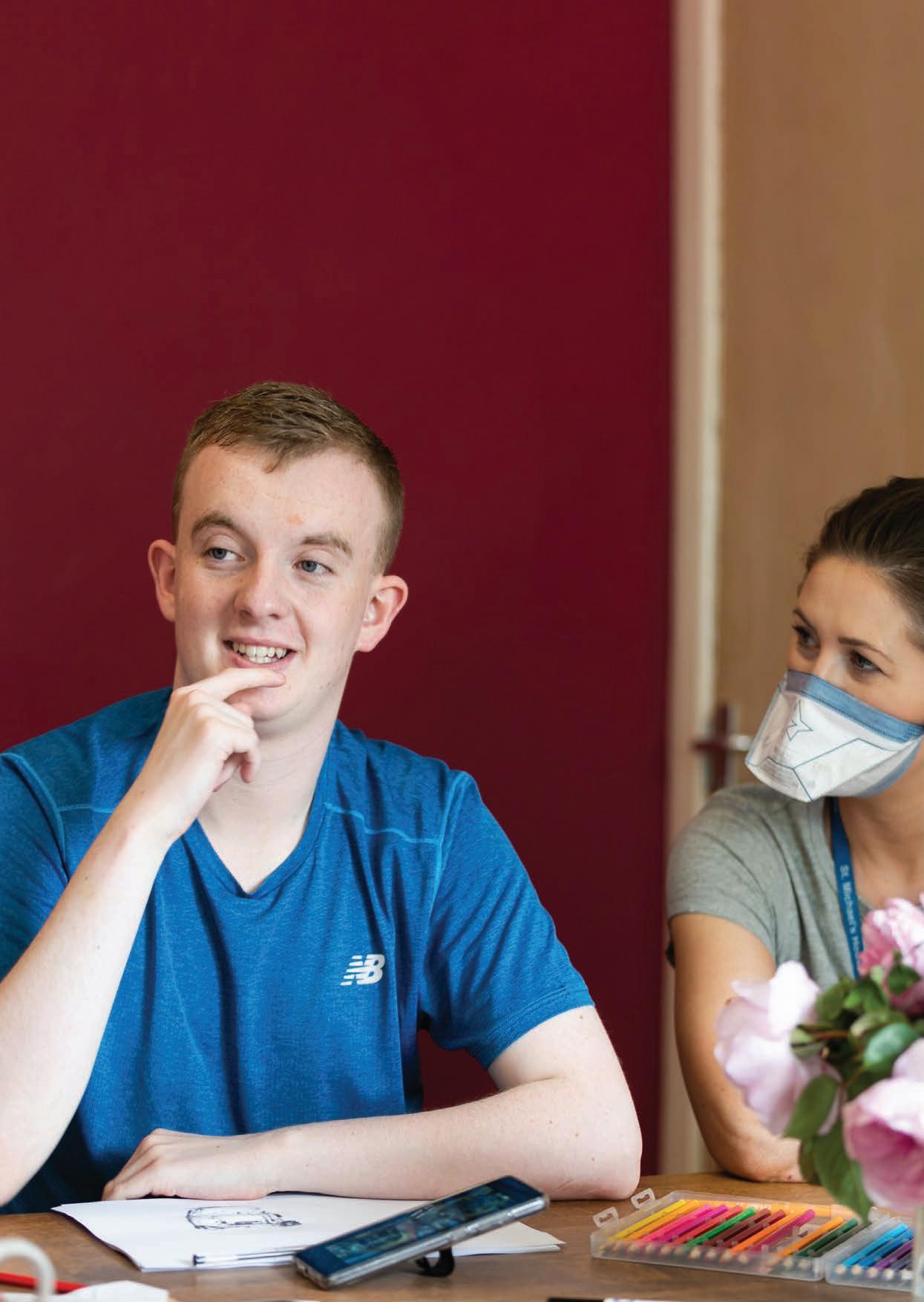
SMH has always been considered a leader in the delivery of services to people with an ID and most recently people with ID & ASD. It has, and continues to work in partnership with government and other organisations nationally and internationally. The Strategy review work suggests there are additional opportunities to work in partnership and thereby maximise sector resources – this includes in the area of research, new innovations, sourcing new funds and potentially the sharing of costs. As one of the largest disability service providers, SMH should and can lead the development of excellent services, advocating and supporting for its own service users and families but also contributing to national and international developments. The following objectives and KPIs have been identified to support the achievement of this goal:
We will…
• Build strategic alliances and partnerships.
• Continue to develop the working relationship with our funders.
• Actively nurture and grow innovations and entrepreneurship in service delivery.
• Support staff and service users to engage in research that informs the evidence base of service delivery.
• Continue to promote our research and learning relationships with 3RD level institutions.
• Be open to learning from others and sharing our learning and developments with others.
• Seek to learn from government bodies and other organisations.
• Develop the skills and expertise needed to continue to be a leader in the delivery of services to people with a disability building creativity, innovation and entrepreneurial capacity.
• Supporting and investing in the Open Training College to support the organisation and the sector to improve sectoral skill, competence, knowledge and best practice.
We will achieve this by…
• The rigorous management of compliance matters and systems.
• The generation and use of high quality data to support regulatory requirements and quality enhancement.
• Developing an internal integrated auditing system and structures to track and manage compliance issues in services.
• Developing workforce education, knowledge and skill in compliance requirements.
• Agreeing a risk appetite statement prioritising compliance requirements.
We will measure success by…..
• Achieving a continuance HIQA compliance rating of 80%.
• Demonstrating to the Housing Regulator that SMH housing stock meets the needs of the residents.
• Production of the HSE Annual Compliance statement.
• Production of the Charities Regulator annual statement.
• Agreement of the annual Service Arrangement with the HSE.
• Demonstrating continual quality enhancement.
• Working with the relevant statutory bodies to develop a position paper that addresses how a QoL measure for our sector might be developed seeking to advance a mechanism for the measurement of quality of life for people who use our services.
Structure and Resourcing (Finance) are key enablers in ensuring that the organisation can implement this Strategy. Structure pertains to organisation management structures which require review and reconfiguration to accommodate the growing complexity and size. Resourcing (finance) has many facets - including multi-year budgeting , the accumulated deficit, the need to robustly mange costs and the need to continue to reconfigure as a creative and efficient response to service need. The following objectives and KPIs have been identified to support the achievement of this goal:
We will..
• Assess if a management restructure or aspects of it would make the organisation more effective and efficient.
• Continually reconfigure to maximise resources and meet service needs.
• Implement more effective and aligned prioritisation of spend within funding constraints and increasing compliance requirements.
• Operate within Board approved budgets working toward financial sustainability.
• Demonstrate efficiency and effectiveness in the use of funds.
• Continue the development of the SMH Foundation to assist the organisation with securing funds for aspects of service not covered by the annual allocation.
We will achieve this by…
• Undertaking an assessment (review) of service models and associated management structures.
• Developing a new Clinical Management Framework.
• Incisive and transparent financial management and reporting that drives effective decision making and use of resources.
• More timely closing out of internal audit recommendations.
• Rolling out a programme on financial management for all managers at PIC level and above, including devolved budgets.
• Strengthening the procurement function and demonstrating value for money.
• Establishing a St. Michael’s House Foundation.
We will measure success by…..
• Implementing the outcomes of the assessment of service models and associated management structures and implementing any changes indicated.
• Implementing a new Clinical Governance Framework.
• Effective deployment of a new financial management system to improve budgeting, financial controls and reporting, implementing electronic processes where possible.
• Demonstrating, through data and agreed output indicators the level of value for money in service delivery.
• Having rolled out a programme on financial management for all managers at Person in Charge (PIC) level and above.
• Devolving budgets to service area management.
• Strengthening the procurement function and demonstrating value for money.
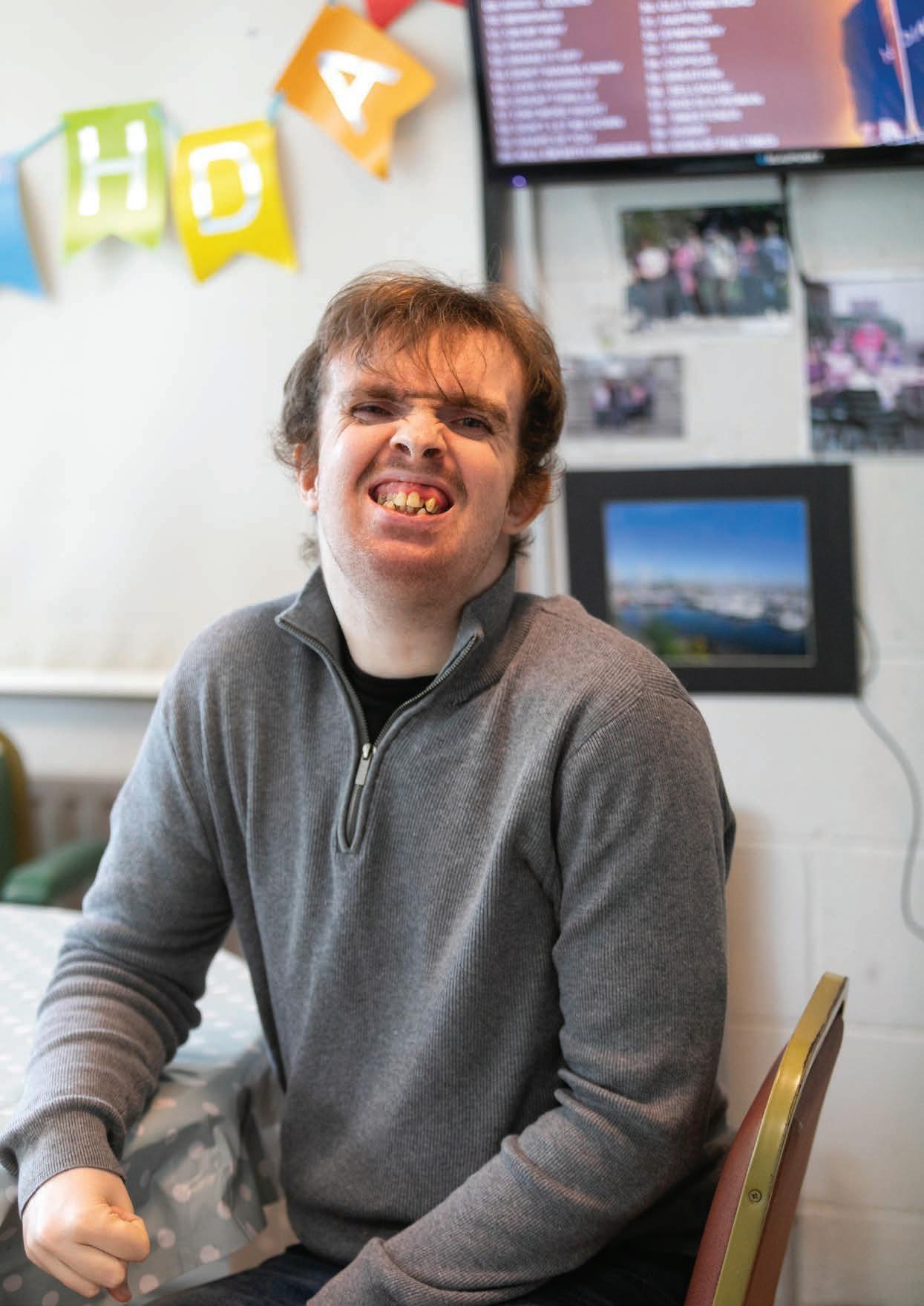
A number of matters require addressing with regard to SU homes, day service provision and administration premises. The first relates to the quality of a number of our existing residential houses and premises and most immediate concerns will be addressed during 2022/23. Once these premises are addressed there are number of properties that require upgrading and all properties require ongoing maintenance. A second matter relates to the development and/or provision of new premises particularly residential homes and as detailed above, the changing profile of our current service users and the growth in demographics indicate that new property (homes) will be required in a planned manner over the coming years. Third some of our day service locations are no longer suitable and require decision and planning with regard to their future use and potential for leveraging. Fourth, excellence in service delivery requires that clinical inputs and administration backup services are well resourced and operate from high quality, appropriate premises. The following objectives and KPIs have been identified to support the achievement of this goal:
We will…
• Develop a five-year housing plan and a five-year properties plan.
• Develop or secure homes for service users that are based on their will and preference.
• Advocate on behalf of service users for housing in local authority developments that are specifically for people with disabilities and based on their needs and will and preference.
• Leverage existing properties to maximise development opportunities in line with needs.
• Seek to provide additional respite by robustly pursuing all available avenues, strategic positioning and working closely with national developments led by the HSE.
• Decongregate our remaining institutional type settings using national funds and processes.
• Implement the recommendations pertaining to premises identified in the Local Centre Review (2018) and the ASD Review (2021).
• Provide day service facilities that are fit-for-purpose, in line with New Directions and reconfigured from large centres into small local community hubs.
• Provide administration and clinical premises that are fit for purpose.
• Develop and implement a plan for meeting our obligations under the Climate Action Plan 2021.
We will achieve this by…
• Working with the participation of service users and families/supporters.
• Ensuring a process for addressing needs and will and preference in our fiveyear housing plan and its actions and our properties plan and its actions.
• Leveraging current properties as required and as makes financial sense.
• Working with appropriate housing bodies and other relevant agencies.
• De-congregating our remaining institutional type settings.
• Working closely with relevant bodies to avail of funding opportunities, complete energy saving projects, and implement measures to reduce our overall emissions.
We will measure success by…
• Publishing a five-year housing plan and annual progress reports.
• Publishing a five-year properties plan and annual progress reports.
• Having mechanisms in place to demonstrate how service users’ will and preference and family inputs are considered in decisions with regard to homes and premises.
• Have provided homes to service users either by working with appropriate housing agencies and/or opening new SMH premises in line with service users will and preference.
• Have used the leveraging of existing properties judiciously to create new homes and premises.
• As we acquire, develop and improve our property portfolio, future-proof all premises by applying the principles of Universal Design and assistive technologies.
• The full decongregation of our remaining institutional settings.
• Seeking to provide additional respite by pursuing all available avenues, strategic positioning and working closely with national developments led by the HSE.
• Accurately monitoring, recording and reporting our energy usage to the SEAI, under the formal process demonstrating year on year efficiencies and percentage changes in the generation of emissions.
It is clear from all reports and from consultations, that SMH faces a range of challenges with regard information management and the necessary underpinning ICT infrastructure. An organisation of the size and complexity of SMH cannot efficiently operate without these two basic components being addressed and so is identified as a key Enabler requiring focus. While significant work will be completed during 2022/23 the ongoing generation of needed information and its management for a range of uses including the negotiation of new funds is essential. The following objectives and KPIs have been identified to support the achievement of this goal:
We will…
• Adopt the approach of scoping what data we need/want to know and why, and respond by adopting/building systems to generate the data/information needed.
• Using the approach above, become a data competent organisation that uses data effectively in service delivery, planning and decision-making.
• Develop a five-year Information management, IT and Communications plan.
• As part of the five-year plan, implement a digital transformation programme congruent with national policy.
• Ensure our systems and data are cyber-safe and secure.
• Use technology creatively and effectively to support service user needs including where indicated assistive technology for communication and other quality of life related matters.
• Develop IT access services for service users, staff and families.
• Utilise our research function in conjunction with systems to develop data that is grounded in evidence and best practice and assists the organisation in achieving its strategic goals.
We will achieve this by…
• Instilling a digital transformation culture.
• Implementing and maintaining robust hardware and software systems.
• Ensuring all digital processes are fit-for-purpose.
• Building staff competence in data generation, management and effective usage.
• Auditing and implementing the security and quality of our structures and systems.
• Linking our research and data generation functions.
• Employing a range of assistive technologies is support of service users, seeking funds and grants to support this.
• Publishing a 5-year Information Management plan (to include IT, digital transformation and communications) and annual progress reports.
• Having robust IT infrastructure with ‘downtime’ consistent with industry norm.
• Ensuring that our software systems are optimized within the resources available and congruent with a digital transformation approach.
• Ensuring relevant staff are supported to upskill in digital areas as developments /needs indicate.
• The successful implementation of Microsoft 365 and its capability across the organisation.
• Using research generated data to inform organisational planning and decision-making.
• Being able to quantify and evidence the assistive technology deployed to support service users.
SMH is many entities – apart from the group structure and the companies in the group, the Section 38 to which this Strategy applies has a number of legal identities itself and is subject to a wide range of regulatory and compliance requirements. Meeting these requirements and keeping them up to date is a core aspect of the organisation and underscores its reliability, integrity, transparency and trustworthiness as a state funded entity. In addition, regulation of residential services and the introduction of standards for day services requires the building of a high quality culture, focussed not just on compliance but on quality enhancement and excellence. The following objectives and KPIs have been identified to support the achievement of this goal:
We will…
• Be a compliant organisation achieving excellent compliance ratings on a continual basis.
• Work toward continual quality enhancement and excellence in all service areas.
• Streamline systems and information to ensure its efficient and effective use across the range of regulatory requirements.
• Continually represent service user’s needs, will and preference in our engagement with regulatory bodies.
We will achieve this by…
• The rigorous management of compliance matters and systems.
• The generation and use of high quality data to support regulatory requirements and quality enhancement.
• Developing an internal integrated auditing system and structures to track and manage compliance issues in services.
• Developing workforce education, knowledge and skill in compliance requirements.
• Agreeing a risk appetite statement prioritising compliance requirements.
We will measure success by…
• Achieving a continuance HIQA compliance rating of 80%.
• Demonstrating to the Housing Regulator that SMH housing stock meets the needs of the residents.
• Production of the HSE Annual Compliance statement.
• Production of the Charities Regulator annual statement.
• Agreement of the annual Service Arrangement with the HSE.
• Demonstrating continual quality enhancement.
• Working with the relevant statutory bodies to develop a position paper that addresses how a QoL measure for our sector might be developed seeking to advance a mechanism for the measurement of quality of life for people who use our services.
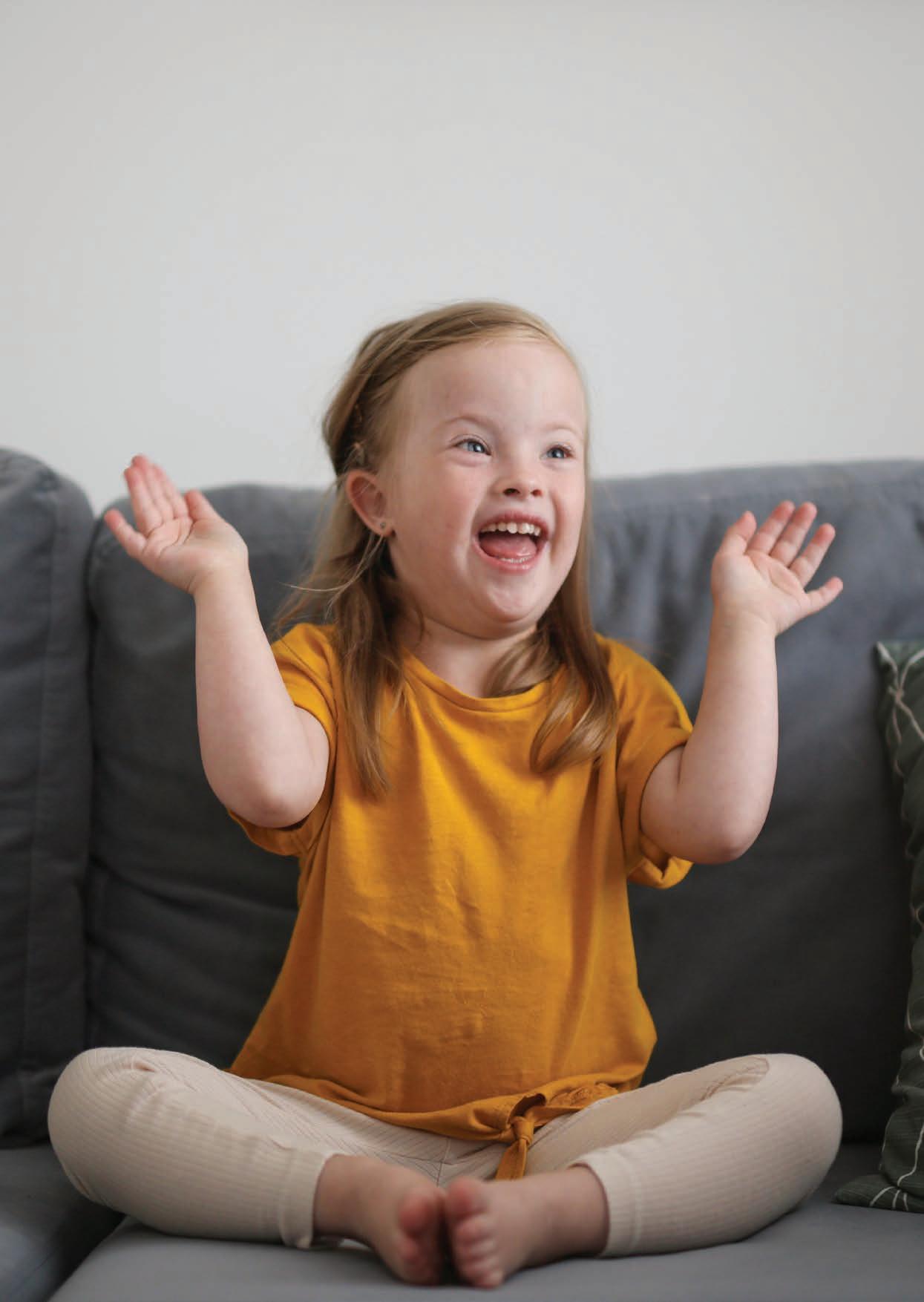
For this Strategy document all rights have applicability to a greater or lesser extent. The following are proposed for particular focus as they relate to each Goal and Enabler: The format of the UNCRPD Articles listed below is credited to Inclusion Ireland. (see www.inclusionireland.ie/uncrpd/)
• Equal recognition before the law – A right to recognition as persons before the law, to enjoy legal capacity on an equal basis with others, to own property and to control their financial affairs, with safeguards to prevent abuse (article 12)
• Living independently and being included in the community – The right to live in the community, be included and participate in the community, the opportunity to choose their place of residence and where and with whom they live, with support and responsive community services (article 19)
• Children with disabilities – Children with disabilities enjoy all human rights and fundamental freedoms on an equal basis with other children (article 7)
The following are also of significance in this Strategy:
• Accessibility – So that people with disabilities can live independently and participate fully in all aspects of life. Accessible – Buildings Information & Communication systems -Technology (article 9)
• Education – The right of persons with disabilities to education without discrimination and on the basis of equal opportunity (article 24)
• Health – We recognize that persons with disabilities have the right to the enjoyment of the highest attainable standard of health without discrimination on the basis of disability (article 25).
• Work and employment – Recognition of the right of persons with disabilities to work, on an equal basis with others (article 27).
• Awareness-raising – A commitment by the state to raising awareness, to encourage respect for the rights and dignity of the person, to combat stereotypes and to promote awareness of the capabilities and contributions of persons with disabilities (article 8)
• Equal recognition before the law – A right to recognition as persons before the law, to enjoy legal capacity on an equal basis with others, to own property and to control their financial affairs, with safeguards to prevent abuse (article 12)
• Living independently and being included in the community – The right to live in the community, be included and participate in the community, the opportunity to choose their place of residence and where and with whom they live, with support and Health – We recognize that persons with disabilities have the right to the enjoyment of the highest attainable standard of health without discrimination on the basis of disability. responsive community services (article 19).
• Awareness-raising – A commitment by the state to raising awareness, to encourage respect for the rights and dignity of the person, to combat stereotypes and to promote awareness of the capabilities and contributions of persons with disabilities (article 8)
• Equal recognition before the law – A right to recognition as persons before the law, to enjoy legal capacity on an equal basis with others, to own property and to control their financial affairs, with safeguards to prevent abuse (article 12)
• Living independently and being included in the community – The right to live in the community, be included and participate in the community, the opportunity to choose their place of residence and where and with whom they live, with support and responsive community services (article 19)
• Freedom of expression and opinion, and access to information – The right to freedom of expression and opinion, including the freedom to look for, receive and pass on information and ideas. (article 21)
• Education – The right of persons with disabilities to education without discrimination and on the basis of equal opportunity and the right to an inclusive education system at all levels, in the communities in which they live, and lifelong learning (article 24)
• Health – We recognize that persons with disabilities have the right to the enjoyment of the highest attainable standard of health without discrimination on the basis of disability.
• Work and employment – Recognition of the right of persons with disabilities to work, on an equal basis with others;
• Adequate standard of living and social protection – the right to an adequate standard of living for themselves and their families, including adequate food, clothing, and housing, and to the continuous improvement of living conditions the right to social protection without discrimination on the basis of disability.
• Awareness-raising – A commitment by the state to raising awareness, to encourage respect for the rights and dignity of the person, to combat stereotypes and to promote awareness of the capabilities and contributions of persons with disabilities (article 8)
• Equal recognition before the law – A right to recognition as persons before the law, to enjoy legal capacity on an equal basis with others, to own property and to control their financial affairs, with safeguards to prevent abuse (article 12)
• Living independently and being included in the community – The right to live in the community, be included and participate in the community, the opportunity to choose their place of residence and where and with whom they live, with support and responsive community services (article 19)
• Accessibility – So that people with disabilities can live independently and participate fully in all aspects of life. Accessible – Buildings – Roads – Transport – Schools – Hospitals – Workplaces – Businesses – Services – Public spaces –Information – Communication systems -Technology (article 9)
• Equal recognition before the law – A right to recognition as persons before the law, to enjoy legal capacity on an equal basis w Freedom from exploitation, violence and abuse – Persons with disabilities, both within and outside the home, shall be protected from all forms of exploitation, violence and abuse. with others, to own property and to control their financial affairs, with safeguards to prevent abuse (article 12)
• Living independently and being included in the community – The right to live in the community, be included and participate in the community, the opportunity to choose their place of residence and where and with whom they live, with support and responsive community services (article 19)
• Adequate standard of living and social protection – the right to an adequate standard of living for themselves and their families, including adequate food, clothing, and housing, and to the continuous improvement of living conditions The right to social protection without discrimination on the basis of disability (article 28)
• Accessibility – So that people with disabilities can live independently and participate fully in all aspects of life. Accessible – Buildings – Roads – Transport – Schools – Hospitals – Workplaces – Businesses – Services – Public spaces –Information – Communication systems -Technology (article 9)
• Equal recognition before the law – A right to recognition as persons before the law, to enjoy legal capacity on an equal basis with others, to own property and to control their financial affairs, with safeguards to prevent abuse (article 12)
• Living independently and being included in the community – The right to live in the community, be included and participate in the community, the opportunity to choose their place of residence and where and with whom they live, with support and responsive community services (article 19)
• Personal mobility – Ensuring personal mobility with the greatest possible independence for persons with disabilities, in the manner and at the time of their choice and at affordable cost (article 20)
• Respect for privacy – The right to the protection of the law against arbitrary or unlawful interference with his or her privacy, family, or communication or to unlawful attacks on his or her honour and reputation. (article 22)
• Living independently and being included in the community – The right to live in the community, be included and participate in the community, the opportunity to choose their place of residence and where and with whom they live, with support and responsive community services (article 19)
• Freedom of expression and opinion, and access to information – The right to freedom of expression and opinion, including the freedom to look for, receive and pass on information and ideas. (article 21)
• Accessibility – So that people with disabilities can live independently and participate fully in all aspects of life. Accessible – Buildings – Roads – Transport – Schools – Hospitals – Workplaces – Businesses – Services – Public spaces –Information – Communication systems -Technology (article 9)
• Equality and non-discrimination – The right to enjoy equal protection and benefit of the law (article 5)
• Freedom from exploitation, violence and abuse – Persons with disabilities, both within and outside the home, shall be protected from all forms of exploitation, violence and abuse.
• Living independently and being included in the community – The right to live in the community, be included and participate in the community, the opportunity to choose their place of residence and where and with whom they live, with support and responsive community services (article 19)
• Education – The right of persons with disabilities to education without discrimination and on the basis of equal opportunity and the right to an inclusive education system at all levels, in the communities in which they live, and lifelong learning (article 24).
